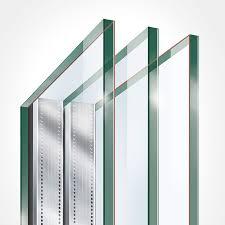Thermal Glass: The Future of Heated Comfort in Contemporary Spaces

Glass has always been the hub of architecture, providing light, views, and openness. But now, it is so much more than that. With the introduction of thermal glass, also referred to as heated glass, this product now actively contributes to generating warm, cosy, and energy-saving interiors. Thermal glass is revolutionising the way we perceive glazing, marrying advanced technology with mundane practicality to maximise contemporary living and commercial space.
What Is Thermal Glass?
Thermal glass is a type of specially designed glazing system that involves the use of an invisible conductive coating. When powered, the coating heats up, turning the glass pane into a radiant heating panel. Essentially, the glass itself functions as a working heater while maintaining its function as a window, door, or partition.
Unlike underfloor heating or conventional radiators, heated glass delivers warmth evenly where and when cold spots occur—such as in big glazed areas of conservatories, atriums, or commercial spaces. It makes it both discreet and efficient, integrating heating technology effortlessly into architectural form.
Key Benefits of Heated Glass
- Comfortable Indoor Climate
Thermal glass eliminates cold spots and draughts commonly found with large glazing. By gently radiating heat, it keeps the interior consistently warm, yet still provides clear, unobstructed vision.
- Anti-Condensation Properties
One of the most practical benefits of heated glass is that it can stop condensation. In areas of high humidity like bathrooms, kitchens, pools, or spa areas, condensation tends to appear on cold surfaces. Thermal glass maintains a higher surface temperature than the dew point, and as a result, the glass stays clear and dry.
- Energy Efficiency
Warm glass can decrease dependency on conventional heating systems, reducing the total energy consumption. It provides localised heat precisely where it’s required, particularly beneficial in areas with high glazing sections. By pairing heating with insulation, thermal glass assists in meeting sustainability objectives and minimising carbon emissions.
- Design Freedom and Versatility
Thermal glass is highly versatile. It can be used for windows, roof glazing, partitions, and even floor-to-ceiling façades. Architects and designers can easily incorporate it into their projects without a compromise in aesthetics, which makes it perfect for modern residential, commercial, and hospitality buildings.
- Ice and Snow Prevention
In colder climates, warm glass may also be fitted in skylights, exterior windows, or roof glazing to melt snow and ice. This enhancement not only increases safety but also guards the structural integrity of the building.
read more:-https://weeblyblog.com/thermal-glass-the-future-of-heated-comfort-in-contemporary-spaces/




